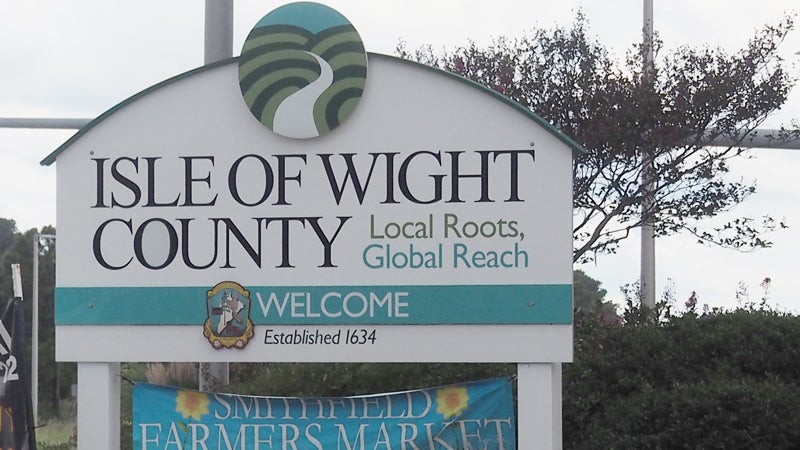Thousands of new homes in development
Published 7:11 pm Tuesday, November 3, 2020
Isle of Wight County and Smithfield could grow by 4,777 homes if every planned development is built out.
Major residential developments are approved in Smithfield through conditional rezoning or under construction. They include Cypress Creek, which will add nearly 200 single-family detached homes, and Church Square, which is 118 condominiums.
The Mallory Scott Farm development, at a planned 1,106 residential units, would make up a substantial part of the area’s anticipated growth if officials OK the project.
The town’s planning commission will meet in a work session for 6:30 p.m. Nov. 4 at the Smithfield Center to discuss the Mallory Scott Farm project in more detail following a recent public hearing in which many residents who spoke opposed the project based on its size and possible negative long-term impact on the community’s small town character. Officials had approved a smaller development of about 250 homes in the same area about a decade ago.
“We don’t mind people coming in — we love more friendly people who want to come in,” said Robyn Ness, who lives in the Moonefield neighborhood near the area in question. “That’s not the problem. It’s just growth too quickly for Smithfield. Our roads can’t handle it and we don’t mind the 260 that [the developer] is approved for. We think that’d be great, if everybody had an acre, put a house on it, it’d be great. Nobody has a problem with that.”
Virginia Beach-based Napolitano Homes seeks to develop 1,106 single-family, duplex, fourplex and 10-plex homes on land near the intersection of Nike Park Road and Battery Park Road. The community would include clubhouses, swimming pools, pedestrian paths, sidewalks and improvements to existing roads.
The size increase — nearly quadruple what was previously planned — is cause for concern, Ness said. “We don’t want to see so much growth at one time,” Ness said. “Maybe honor what was given in 2006.”
Online petitions are circulating in opposition to the project.
Planning Commission Chairman Randy Pack, who is also a town councilmember, said no decision on the Mallory Scott project is expected at the Nov. 4 meeting. A decision, however, may be issued at the group’s next regularly scheduled meeting on Nov. 10. “If no decision is made Nov. 10, we must make a recommendation at our Dec. 8 meeting or it automatically forwards to town council with a favorable recommendation,” Pack said in an email. If the Mallory Scott project were developed to its maximum size allowed under current ordinances, just over 1,800 homes would be permitted on the site, Pack said.
“The applicant has asked for just over 1,100 homes so if we were to act favorably on his request we would be allowed to do so by the ordinance,” Pack said. “However, because this is a request to rezone we do not have to recommend it favorably to town council. We could recommend denial. It is ultimately up to the Town Council to approve or deny the request for rezoning.”
Furthermore, Pack explained, once the planning commission sends its recommendation to town council, council would then hear the request, hold a public hearing and then have one year to act on the rezoning requests that are pertinent to the development project.
In order to achieve the desired density at the Mallory Scott project, the developer was required to request a waiver of parking and loading requirements; otherwise, implementing required parking improvements would limit the overall area available for development, according to John Settle, the town’s planning and development director.
The developer also requested a special use permit “for a cluster residential subdivision in the suburban residential district,” which also means greater development density and therefore, “if the decision makers deny the [special use permits], the applicants would have to reengineer their plans, most likely at a lower density than what is currently proposed.” Settle said in an email the only other way to potentially limit the density of the project would be for the applicant to voluntarily proffer to do so and the town council would have to accept the proffer upon ultimate approval of the project’s application.
In the event that the applicant’s rezoning application is denied, Settle said a one-year moratorium begins in which the developer cannot reapply for what zoning ordinances term “substantially the same request” and in addition, “as per any decision of the town council, the applicant has the option to appeal their decision to the Isle of Wight County Circuit Court,” Settle said.
Amy Ring, Isle of Wight County’s director of community development, prepared the development summary for a recent board of supervisors retreat. According to Ring, since July 2019, the county grew by an additional 281 new residential units as of Sept. 30, the most recent information available. From January through September, the county issued 1,633 building permits, up from 1,447 from the same time frame last year.
Ring said it’s typical for development numbers to wax and wane over time.
“The developers typically give us a build out year when their applications are approved but market conditions and availability of financing can change plans drastically. Absent this, developers project anywhere from two to 10 years to build out the majority of the subdivision, depending on the size of the development,” Ring said.
Rapid growth usually isn’t ideal, but sustained long-term growth can also strain people’s patience, said Ness, who has lived in the neighborhood for 30 years.
“When you say growth for 15 years, and building for 15 years, that’s a long time for the neighbors to put up with it. Nobody wants to live next to a dump truck and a generator going.”
Yet, she also acknowledged that community change is a given in most cases. “When I moved to Moonefield, I think there were 17 houses back here,” Ness said. “We knew [growth] was going to come.”





